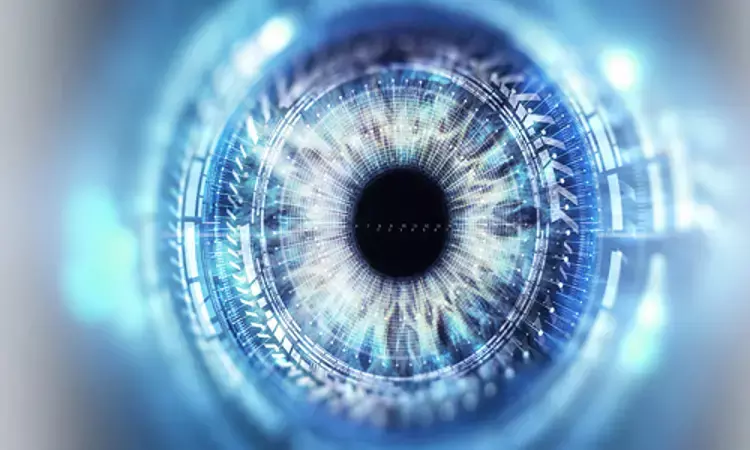- Home
- Medical news & Guidelines
- Anesthesiology
- Cardiology and CTVS
- Critical Care
- Dentistry
- Dermatology
- Diabetes and Endocrinology
- ENT
- Gastroenterology
- Medicine
- Nephrology
- Neurology
- Obstretics-Gynaecology
- Oncology
- Ophthalmology
- Orthopaedics
- Pediatrics-Neonatology
- Psychiatry
- Pulmonology
- Radiology
- Surgery
- Urology
- Laboratory Medicine
- Diet
- Nursing
- Paramedical
- Physiotherapy
- Health news
- Fact Check
- Bone Health Fact Check
- Brain Health Fact Check
- Cancer Related Fact Check
- Child Care Fact Check
- Dental and oral health fact check
- Diabetes and metabolic health fact check
- Diet and Nutrition Fact Check
- Eye and ENT Care Fact Check
- Fitness fact check
- Gut health fact check
- Heart health fact check
- Kidney health fact check
- Medical education fact check
- Men's health fact check
- Respiratory fact check
- Skin and hair care fact check
- Vaccine and Immunization fact check
- Women's health fact check
- AYUSH
- State News
- Andaman and Nicobar Islands
- Andhra Pradesh
- Arunachal Pradesh
- Assam
- Bihar
- Chandigarh
- Chattisgarh
- Dadra and Nagar Haveli
- Daman and Diu
- Delhi
- Goa
- Gujarat
- Haryana
- Himachal Pradesh
- Jammu & Kashmir
- Jharkhand
- Karnataka
- Kerala
- Ladakh
- Lakshadweep
- Madhya Pradesh
- Maharashtra
- Manipur
- Meghalaya
- Mizoram
- Nagaland
- Odisha
- Puducherry
- Punjab
- Rajasthan
- Sikkim
- Tamil Nadu
- Telangana
- Tripura
- Uttar Pradesh
- Uttrakhand
- West Bengal
- Medical Education
- Industry
Contact lens sensor may predict IOP changes in open angle glaucoma

A new study by Thibaut Gaboriau and team showed that the features of the 24-hour intraocular pressure (IOP)-related changes, as determined by a contact lens sensor (CLS), may be a risk factor for open angle glaucoma (OAG) development. The findings of this study were published in Investigative Ophthalmology & Visual Science.
A gradual loss of retinal ganglion cells and optic nerve axons characterizes the neurodegenerative illness glaucoma, which also causes visual field abnormalities and typical expansion of the optic nerve head cup. Even in glaucoma instances where the intraocular pressure (IOP) was determined to be within the normal range by the conventional Goldman applanation tonometry, several investigations have shown that the level of IOP plays a significant impact in the beginning or progression of glaucoma. The goal of this study was to examine the rates of visual field progression in individuals with open angle glaucoma across two groups of 24-hour intraocular pressure-related fluctuations monitoring.
Cross-sectional research was done at the University Hospital of Bordeaux. A contact lens sensor was used to conduct 24-hour monitoring. The mean deviation (MD) parameter of the visual field test was used to compute the progression rate using a linear regression (Octopus; HAAG-STREIT, Switzerland). Two groups of patients were assigned: group 1 had an MD progression rate of less than 0.5 dB/year, and group 2 had an MD progression rate of less than 0.5 dB/year. To compare the output signal between the two groups, an automatic signal-processing algorithm was created and a frequency filtering of the monitoring by wavelet transform analysis was employed. A multivariate classifier was used to determine which group would develop more quickly.
The key findings of this study were:
54 patients' eyes, totaling 54, were included. In group 1 (n = 22), the mean progression rate was 1.09 0.60 dB/year, while in group 2 (n = 32), it was 0.12 0.13 dB/year.
Group 1 had a substantially greater 24-hour magnitude and absolute area under the monitoring curve than did group 2 (group 1: 343.1 62.3 mV and 8.28 2.10 mV, respectively; group 2: 274.0 75.0 mV and 6.82 2.70 mV, respectively; P 0.05).
At brief frequency intervals of between 60 and 220 minutes, group 1 likewise had considerably larger magnitude and area under the wavelet curve (P 0.05).
In conclusion, the CLS, together with other predictors of glaucoma development, may aid in early treatment approach adjustment.
Reference:
Gaboriau, T., Dubois, R., Foucque, B., Malet, F., & Schweitzer, C. (2023). 24-Hour Monitoring of Intraocular Pressure Fluctuations Using a Contact Lens Sensor: Diagnostic Performance for Glaucoma Progression. In Investigative Opthalmology & Visual Science (Vol. 64, Issue 3, p. 3). Association for Research in Vision and Ophthalmology (ARVO). https://doi.org/10.1167/iovs.64.3.3
Neuroscience Masters graduate
Jacinthlyn Sylvia, a Neuroscience Master's graduate from Chennai has worked extensively in deciphering the neurobiology of cognition and motor control in aging. She also has spread-out exposure to Neurosurgery from her Bachelor’s. She is currently involved in active Neuro-Oncology research. She is an upcoming neuroscientist with a fiery passion for writing. Her news cover at Medical Dialogues feature recent discoveries and updates from the healthcare and biomedical research fields. She can be reached at editorial@medicaldialogues.in
Dr Kamal Kant Kohli-MBBS, DTCD- a chest specialist with more than 30 years of practice and a flair for writing clinical articles, Dr Kamal Kant Kohli joined Medical Dialogues as a Chief Editor of Medical News. Besides writing articles, as an editor, he proofreads and verifies all the medical content published on Medical Dialogues including those coming from journals, studies,medical conferences,guidelines etc. Email: drkohli@medicaldialogues.in. Contact no. 011-43720751


